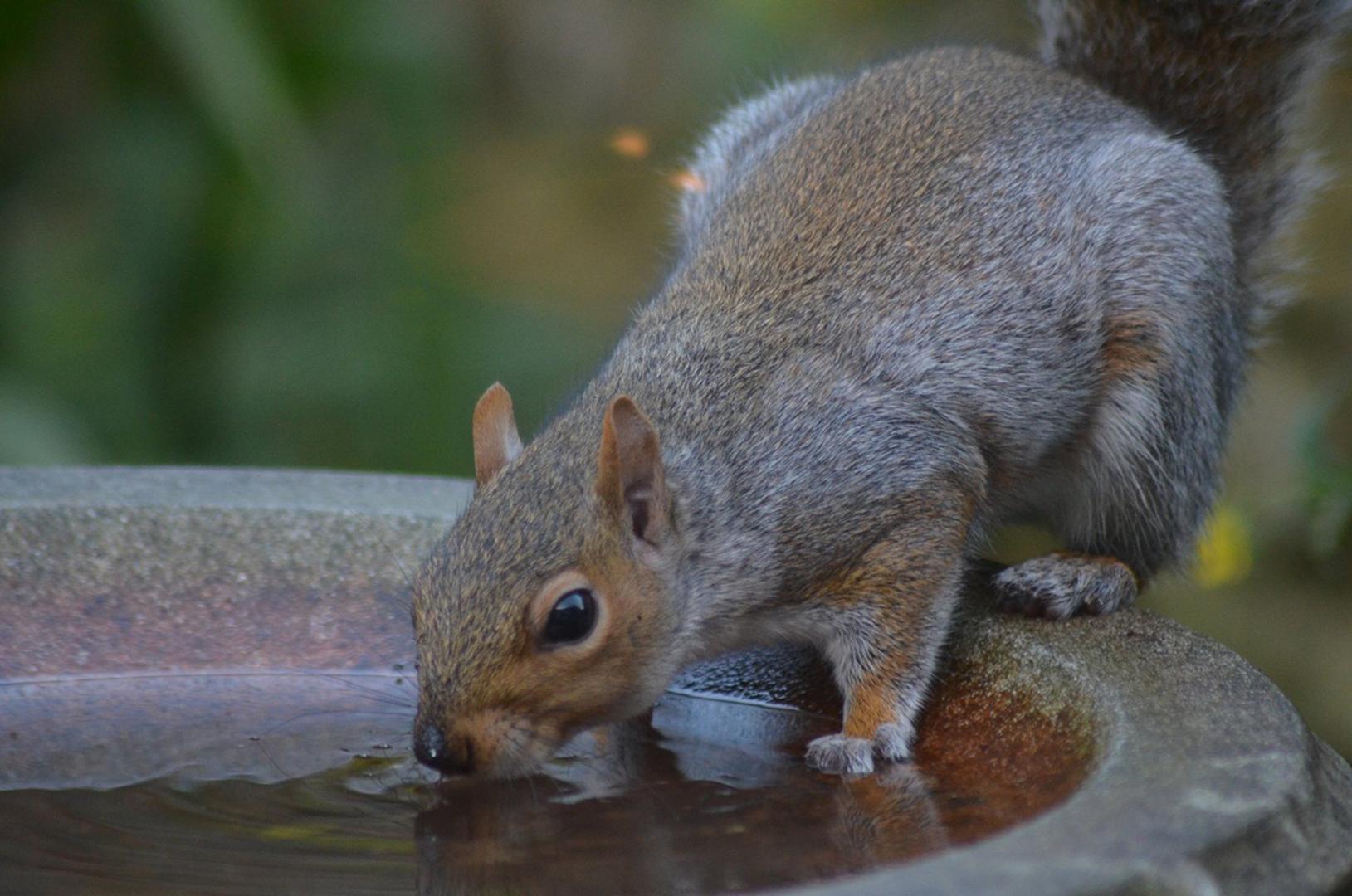Nature Notes with Dave Moore
DURING the latter part of the 19th century the then Duke of Bedford, during a visit to America, observed a small mammal acrobatically springing from branch to branch in some woodland and fell in love with them.
He decided to have a few caught to take back to his estate, Woburn Abbey, in England.
This was how the cute looking grey squirrel was introduced to Britain.
In America they were preyed on by pine martens, birds of prey and other carnivores, including coyotes, that to a certain extent controlled their populations.
Here in Britain they have none; this situation led to their rapid increase across large areas.
Breeding takes place during the early months of the year producing up to four kits in what is known as a drey, constructed high in a tree and made of small twigs shaped like a football.
The kits become independent at about three months. Grey squirrels are omnivorous but their diet is mainly made up of seeds, nuts and berries.
During autumn they cache food, burying it under the topsoil, in crevices in trees and randomly all over the woodland floor.
Naturally they forget where every nut is available. The ones that cannot be located sprout and regenerate into saplings, leading to the new growth of woodland.
During winter they hibernate but this I believe does not occur so much nowadays as winter months have become much milder. Even in times past during mild spells of cold winters they would venture out on warmer days.
As I have explained in previous notes, one of nature’s methods of controlling wildlife populations is by disease and what is known as “squirrel pox” is now rampant.
That must keep their numbers in check to a certain degree but to the detriment also to our own indigenous red squirrel.
Reds are also dominated by the “greys” that are much larger and stronger. Reds can only be observed in small pockets throughout the UK. Their colour of a rusty red is much nicer on the eye than its cousin and they are nowhere near as confident.
Their lifestyle is very similar but they are now a rare sight. The pine forests of Dumfries and Galloway hold decent numbers as I have observed them there over many years.
They really are a sight for sore eyes when they have their red summer coats and that bushy tail.
Attempts are being made to introduce them to areas in the north of England. I have my doubts as to whether this will be a success. The only real predator in Britain is the pine marten but they are almost only present in Scotland.
Suggestions have been made to introduce them to English woodlands but my thoughts are no, as in time they would spread and they are not fussy when it comes to squirrels – red or grey would be preyed upon. Just my opinion.
Let’s be honest grey squirrels provide a lot of entertainment to people in gardens and parks. Good luck to them and long may they carry on doing so.
l Dave Moore is a wildlife enthusiast from Hutton Magna.






